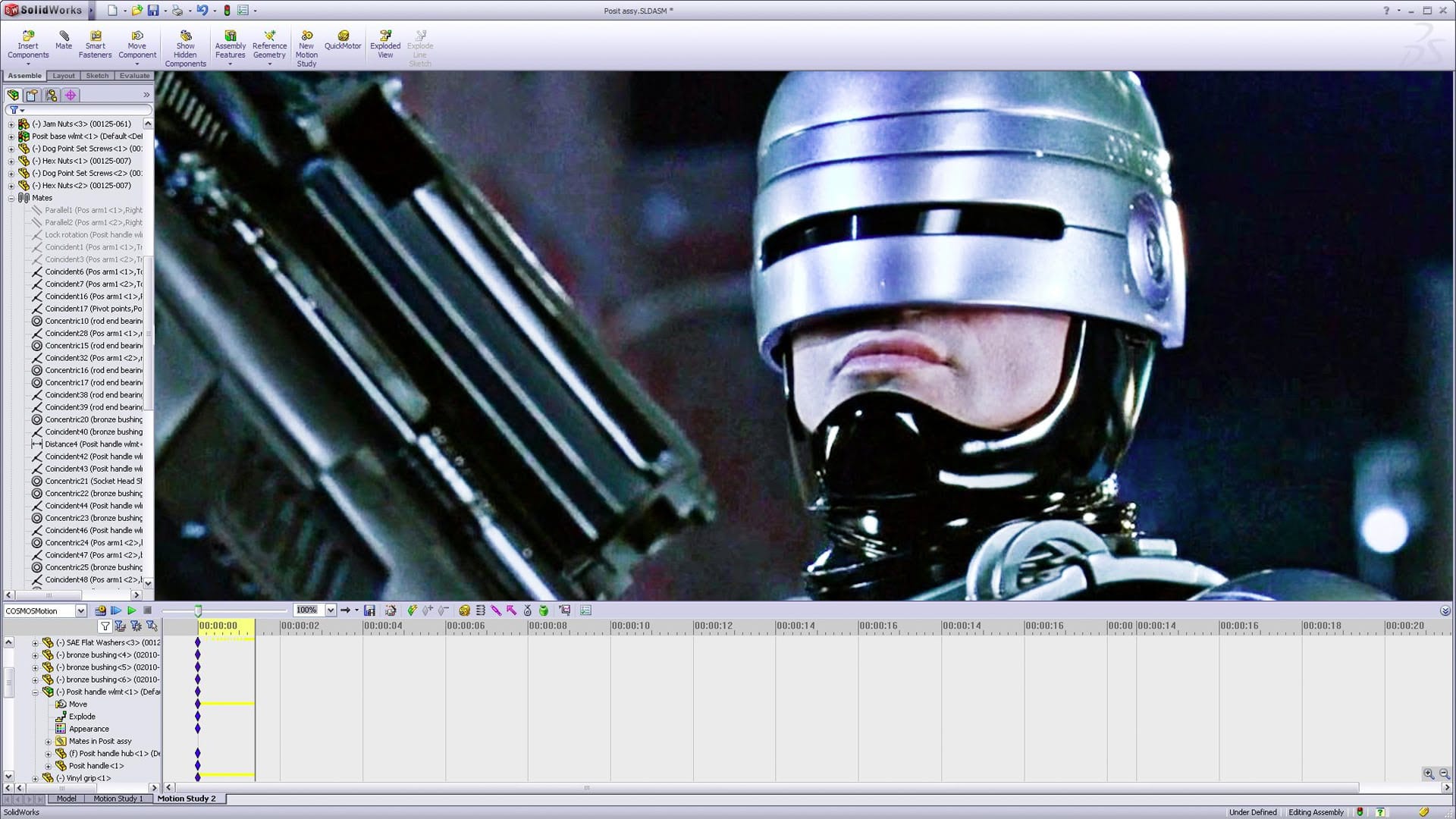
If all you have is a hammer, everything looks like a nail. When all you know is SolidWorks, everything you design will look like RoboCop. You can do better.
Much as I relish a click-bait headline, if you are confused, angry, upset, or disturbed by the suggestion that you stop using CAD as your go-to design tool, (1) reevaluate your life priorities, (2) I didn’t actually say that.
I said you shouldn’t do your own CAD, not that you shouldn’t do it at all.
Take a deep breath and think it through. What percentage of your day do you spend on clickety-clack? Now go back to your fresh-faced eighteen-year-old self and say “someday you will spend the vast majority of your day staring at a glowing rectangle and wiggling a little clicker thing on your desk.” If you’re like me, your eighteen-year-old self just kicked you in the crotch and ran away.
But even if we accept that staring at phosphorescent pixel grids for 80% of our waking life is inevitable, it doesn’t follow that we need do so in isolation. In the end, this is my primary argument: that working alone is never as efficient, effective, or fulfilling as working in a group, and the most productive groups allow for specialization and interdependence.
The idea that designers should do their own CAD work is a relatively recent phenomenon. When I was a college intern, it was still very common for industrial designers to eschew CAD entirely in favor of sketching and physical model building. That work would then be passed along to a full-time digital craftsman, who would document the design in CAD.
How distant that world feels! Today it’s taken as gospel that any designer under the age of forty-five must spend at least half of every day in one 3D digital design tool or other.
There is nothing inherently wrong with this. But we should question it.
I am no Luddite.
Like you, I spend eight hours every day staring at a glowing rectangle and wiggling that little clicker thing.
I’ve lived and breathed this stuff ever since my dad brought home Photoshop 3.0 on a stack of 3.5″ floppies circa 1994 (the first version with “layers”). As I type these words from my home office on a sunny Sunday afternoon, I can hear my three-year-old daughter downstairs saying “where’s Daddy?” I’m hopelessly addicted. It’s sad, and I love it.
3D digital design tools have been at the core of my career ever since I learned Rhino and SolidWorks in college, Alias as an intern, CATIA V5 as a junior designer, NX7 as a designer, and MODO as a CAD visualization specialist. I spent two years teaching Rhino, SolidWorks, and MODO to classrooms full of college kids and Hollywood visual effects professionals in LA. I’ve traveled the country teaching the same skills to design teams at automotive, sporting goods, and consumer electronics companies.
Designers should not do CAD
Not only do I use CAD myself, I encourage my students to take it seriously. CAD is a crucial skill for anyone designing manufactured goods of any kind. If you are not CAD-literate, you are going to find it exceedingly difficult to find work as an industrial designer.
Taken a step further, I consider skilled CAD use as a form of craftsmanship, not unlike carpentry. Understanding the craft of digital design is essential to understanding the design of manufactured objects.
If you want to design wooden furniture, you must first understand carpentry. If you want to understand industrial design, you must embrace CAD.
There is a difference, however, between mastering CAD and letting CAD master you. This is a crucial distinction.
5. CAD is distracting
How many times have you sat down to solve a design problem, and gotten sucked into solving a CAD problem instead? This is such a common problem that it’s easy to forget just how much of our mental energy we devote to the tool rather than the workpiece. When I work with a pen and paper, my whole attention is focused on the design, not the medium.
By allowing someone else to do your CAD work, you allow yourself the headspace to focus on the design itself.
4. CAD is a crutch
All too often we use CAD as an excuse to avoid difficult design problems. Rather than focusing on the design itself, it’s often easier to sit down and tap away at the slow, steady grind of monotonous CAD work.
We also allow tools to make our design decisions for us. It is not surprising that when Alias was first popularized in the 90s, all of the fashionable designs suddenly became swishy swoopy. When Grasshopper came along, suddenly everything had to have generative patterns. Ever since SubD made its way into CAD, everything’s gone ooey gooey.
Sometimes CAD can even be an excuse for convenience-based design choices: if a given geometry is easier to achieve in the tool at hand, we’ll go with the path of least resistance.
If you allow your mind to focus on actual design problems, your designs will love you for it. No excuses.
Read the rest at SolidSmack.com

